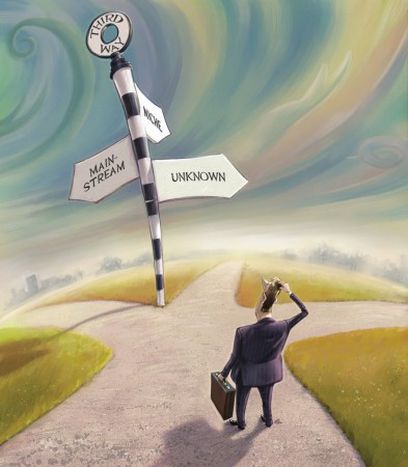
“Europe at a crossroads”. After the EU Summit, a lesson from the past
Published on
By Cristina Mariani “The debilitating effects of two bloody wars and the weakening of Europe's position in the world brought a growing realisation that only peace and concerted action could make the dream of a strong, unified Europe come true. … A start was made with a coal and steel community. Other economic activities, such as agriculture, were subsequently added in.
A genuine single market was eventually established forgoods, persons, services and capital, and a single currency was added in 1999. On 1 January 2002 the euro is to become a day-to-day realityfor 300 million European citizens.”
It’s December 2001 and this is the introductory paragraph of the Laeken Declaration on the Future of the European Union, which constitutes the annex of the Belgian Presidency conclusions drafted at the end of the European Council summit held on 14-15th December
Weare at a crucial point for the union. In the aftermath of the Irish rejection of the Nice Treaty, certain basic reforms committing Europeto greater democracy, transparency and efficiency were recognised asnecessary.“The Union stands at a crossroads, a defining moment in its existence”, stressed the Declaration.
On 1979, the first direct elections to the European Parliament took place, thus enhancing the democratic values from which the European Union derives its legitimacy. Cooperation has been established among Member States on new significant areas, including social policy, employment, asylum, justice, foreign policy and a common security anddefence policy. In addition, considerable progress has been made inthe negotiations for the accession of the candidate countries:“Europe is on its way to become a big family”.
Beyondits borders, however, 11th September has abruptly changed the image of the globalised system and rapidly raised awareness on the increasing religious fanaticism,ethnic nationalism and terrorism. A consequent period of slowergrowth and uncertainty, accompanied by a reduction in demand, has presented new basic challenges to the Union. How to bring citizens,primarily the young, closer to the European design and the European institutions; how to organise politics and the European political area and enlarged Union, and how to develop the Union into astablising factor and a model in the new, multi-polar world.
‘Recurring phases of historical cycles’, as Giambattista Vico would probably say.
“The introduction of euro notes and coins on 1 January 2002 will be the culmination of a historic process of decisive importance for the construction of Europe. … The use of the euro on international financial markets should be easier as a result. The euro area now represents a pole of stability for those countries participating in it by protecting them from speculation and financial turmoil”,specified the 2001 Presidency’s conclusions
A twist of fate, ina gallows-humour sort of way, we would say now.
But “the European Union is a success story”,according to the declaration. Even if it is a two-speed Europe?
Only history will tell. To be continued.



